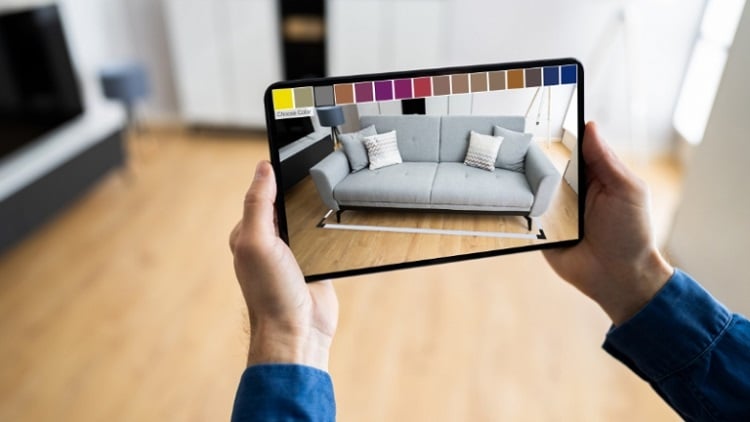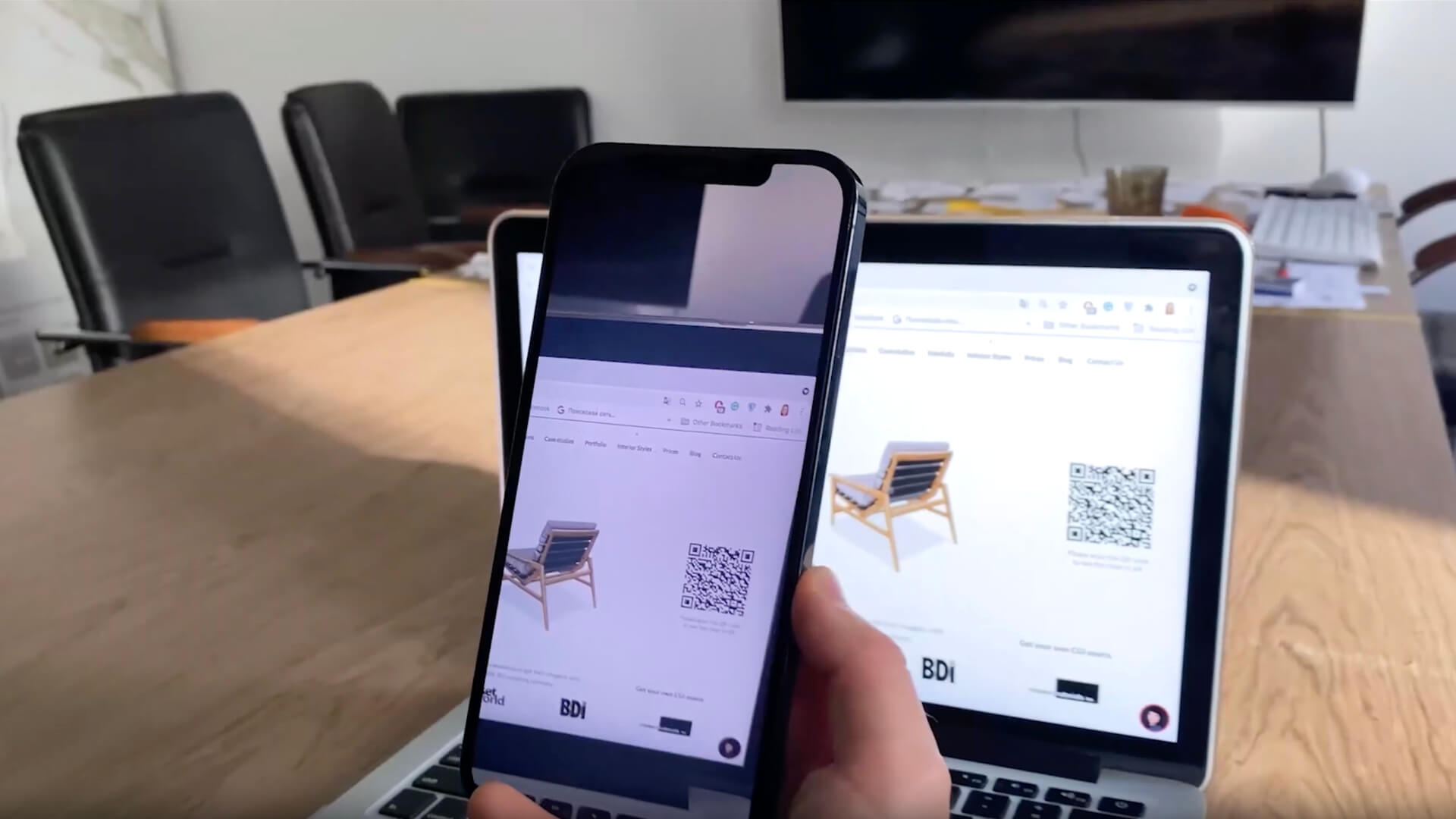Web-Based Augmented Reality (WebAR) has arisen as a groundbreaking technology, mixing virtual elements with the natural world in users’ web browsers.
In this blog post, our 3D modeling company covers the multifaceted aspects of WebAR, underlining its influential edges from accessibility, cross-platform compatibility, cost-efficacy, real-time updates, and improved user engagement.
We also talk about the challenges of WebAR, including performance limitations, limited hardware access, security concerns, and browser compatibility issues.
Read on!
Advantages of Web-Based Augmented Reality
We explore the multifaceted advantages of WebAR, each aspect painting a picture of a technology that is not just futuristic but also user-centric and economically viable. From the ease of accessibility that invites users from all walks of life to the cross-platform compatibility that ensures a uniform experience across various devices, AR for e-commerce is a marvelous option among retailers and marketers to win digital engagement.
#1. Effortless Access
The significance of Web-Based Augmented Reality lies in its unmatched accessibility. This technology revolutionizes the user experience by letting direct immersion into augmented reality via standard web browsers. This plainness in access significantly reduces the hurdles for users. The effect? A technology that’s not only advanced but also universally accessible, significantly expanding its user base and reach.
#2. Universal Compatibility
Web-Based Augmented Reality’s intrinsic cross-platform compatibility is a game-changer. This technology adjusts fluidly across diverse devices and operating systems, from smartphones and tablets to desktops. The hallmark of WebAR is delivering a consistent and high-quality user experience, regardless of the device. This adaptability not only enhances its appeal but also cements its position as a versatile and universally embraced digital solution.
#3. Economic Efficiency
WebAR stands out for its economic efficiency compared to traditional AR applications. By sidestepping the exhaustive development process and app store submissions, it capitalizes on the existing web infrastructure. This approach to augmented reality is not just innovative but also cost-effective, especially for businesses seeking to explore the AR realm without heavy investments. Web-Based Augmented Reality, thus, emerges as a financially savvy choice, offering substantial technological benefits without the associated high costs.
#4. Dynamic Content
One of the most compelling aspects of WebAR is its capability for dynamic, real-time content updates. Users can access the latest AR experiences without the hassle of downloading updates or additional installations. This feature ensures that audiences are always at the forefront of the most current and engaging augmented reality content, a key factor in maintaining relevance and interest in the fast-paced digital world.
#5. Engaging Experiences
Where Web-Based Augmented Reality truly shines is in its capability to expand user engagement. Its cost-effective core unlocks new doors for companies and individuals correspondingly, while the ability for real-time updates maintains the technology ever-evolving and relevant.
Most notably, the enhanced user engagement brought about by WebAR means a new era in digital interaction, where users are more corresponding, involved, and immersed.
Disadvantages of Web-Based Augmented Reality
While WebAR presents a futuristic leap in digital interaction, it’s essential to acknowledge and understand its inherent challenges. These barriers, varying from performance issues to security concerns, affect the overall cogency and adoption of WebAR technologies.
#1. Performance Hurdles
At the peak of Web-Based Augmented Reality’s disadvantages are performance limitations. The quality and smoothness of the augmented reality experience heavily depend on factors like internet speed, device capabilities, and the specificities of various web browsers. Handling these performance issues is important for ensuring that AR lives up to its full potential.
#2. Hardware Access
Another notable challenge for Web-Based Augmented Reality is its limited access to certain hardware features. This limitation can sometimes curtail the depth and complexity of AR experiences. For instance, advanced sensory or tracking features available in dedicated AR devices might not be fully exploitable in WebAR, thus affecting the richness and immersion of the AR experience.
#3. Security
In the realm of WebAR, security remains a critical issue. The web-based core of this technology potentially exposes it to different cybersecurity hazards, particularly when dealing with sensitive user data. Enforcing robust and comprehensive security protocols is binding to protect user information and maintain trust in Web-Based Augmented Reality platforms.
#4. Offline Limitations
The reliance on AR for consistent internet connectivity is another drawback. In situations where internet access is unavailable, users may find themselves unable to utilize the AR features fully, thereby limiting the utility and accessibility of WebAR applications in offline scenarios.
#5. Browser Compatibility
Ensuring that WebAR experiences are consistent across different web browsers poses a significant challenge. Creators are tasked with optimizing and adapting AR experiences for different platforms, which can be a complex and time-consuming process. This need for comprehensive compatibility adjustments can hinder the seamless and widespread adoption of WebAR.
Let your customers not only view but interact with your products in their space. Our AR models allow for an engaging demonstration of your products’ features, providing realistic and practical 360-degree and close-up views. This interactive experience is mostly useful for showcasing products like furniture, where seeing the item in space is required. Try it now by scanning our QR code to view the 3D model in Augmented Reality.
As you can see, it allows prospects to examine products in detail, try items in their intended space, and learn through Web-Based Augmented Reality instruction manuals. This level of customer interaction is unprecedented in online retail.
Get started today with CGIFurniture, trusted by the best brands in the industry. Explore our case studies, and portfolio, or contact our managers to find out how our 3D modeling services for Augmented Reality marketing can transform your brand!





Leave a Reply
Want to join the discussion?Feel free to contribute!